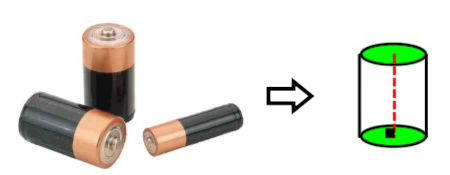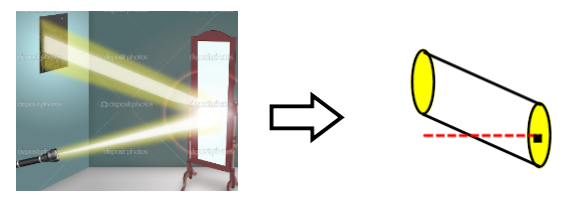A propane tank, a candle, or even a tree stump are examples of real-life cylinders.
Cylinders are solids with curved surfaces made up of two parallel circular bases and a rectangle or parallelogram, which serves as its lateral face.
The lateral face of a cylinder will depend on whether it is right or oblique.
Just like prisms, cylinders have two bases that are circles. However, cylinders also have other special characteristics that define them.
-
Both bases are isometric (congruent) circles.
-
The bases are parallel.
-
The lateral face is normally composed of a rectangle or a parallelogram.
A cylinder is represented by the two drawings in the following example.

Like with cones, it is possible to create perfectly vertical cylinders as well as those that are not.
A right cylinder is a cylinder whose height from the centre of one base meets the centre of the other base.
A right cylinder is perfectly vertical. As a result, its lateral face is a rectangle.

In the previous example, the two bases are aligned vertically and the height connects the centre of each base. However, this is not always the case.
An oblique cylinder is a cylinder whose height from the centre of one base does not connect to the centre of the other base.
Even if the bases are not aligned vertically, they must remain parallel. The lateral face of an oblique cylinder is a parallelogram.
The beam of a flashlight in a mirror can create an oblique cylinder.
Note that the two circular bases in this case are parallel, but the centres are not connected by the same height.

